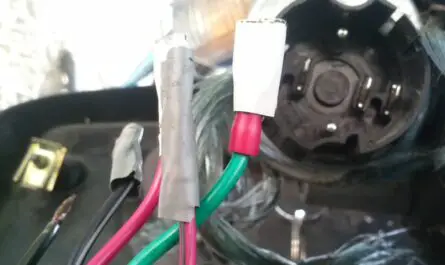Taking care of a tight scooter engine can be incredibly frustrating. You might have tried different solutions to fix the problem and feel overwhelmed when none of them seem to work. There are a lot of things to keep in mind when it comes to understanding what causes engines to seize up, for example we find:
- Lack of lubrication
- Old or dirty oil
- Buildup of rust and grime in the engine
The good news is that it may be possible to fix the problem. Here is an article that explains how to do it.
Why did your scooter tighten?
The scooter can tighten in different ways. Unfortunately, this phenomenon is more common than you might think. Depending on the cause, there are different solutions to fix the problem, which you may or may not be able to fix on your own.
Cause 1: Lack of lubrication
This is the most common cause of the problem. Failure to top up or adding quality oil to your scooter engine will likely cause the engine to tighten. If you think this is the reason, the damage done might already be too severe for you to fix yourself. The oil helps lubricate engine parts and transfer heat away from moving parts. Replacing engine oil is an essential part of scooter maintenance.
solution:
Lubricate your pistons and the engine's combustion chamber - To do this, remove all the spark plugs, then pour a quality lubricant into the spark plug holes that lead to the top of each piston. Do this for each candle hole. Use a lubricant that breaks down dirt, like WD-40 or Marvel Mystery Oil which provides top notch penetration.
After adding the lubricant, wait a few hours for it to soak up, then put your scooter in first gear without starting it and tilt it slightly back and forth a few centimeters at least. The upward and downward force exerted on the plunger will help release it. Do it smoothly to release your tight scooter motor.
What you will need:
Cause 2: Old or dirty oil
Topping up oil sparingly can be good for your wallet, but ends up causing problems on your cruiser scooter. The oil degrades and thins over time and its lubricating effects are minimal. Old or dirty oil will eventually cause pistons to stop as well as other problems, leading to engine clogging.
solution:
Manually Turn the Flywheel - If you have enough experience in general maintenance of your scooter at home, you should be able to remove the base cover of your scooter, located on the side of the engine. Place an oil pan underneath as the oil will drain out. You can also change the oil before removing the base of the crack. You should see a bolt sticking out in the middle.
What you will need:
Quality oil: Designed for regular use in town or on the road.
Cause 3: Accumulation of rust and grime in the engine
If you let your scooter sit too long, water and condensation can often end up in the engine and carburetors, which promotes rusting. With rust, your piston will merge with the cylinder wall of the engine. The build-up of gunk inside the engine causes the same problem.
solution:
Use a socket to turn the bolt or nut back and forth. Do not use too much force, as this may further damage your engine. This should help you loosen your pistons. Then use an anti-rust treatment for your scooter engine.
Essential product to repair your scooter:
Anti-rust treatment: This rust remover which does not contain lead applies directly to the rust and acts in 5 minutes
How to keep your scooter from getting tight?
- Make sure your scooter always contains oil.
- Change the oil at least once a year or every 3500 miles.
- Check your owner's manual to find out what type of oil you should use and how often you should change it.
- If you will not be using your scooter for a long time, turn it on frequently and let it idle to allow fluids to circulate and the oil to reach its maximum operating temperature. This will help prevent rust and dirt build-up.
- If your scooter needs coolant, top it up every now and then.
Learn more about your scooters:
Here is an article that serves as a guide and helps you choose your scooter better before purchasing. For this, we give you the details on the characteristics and the different types of scooter.




